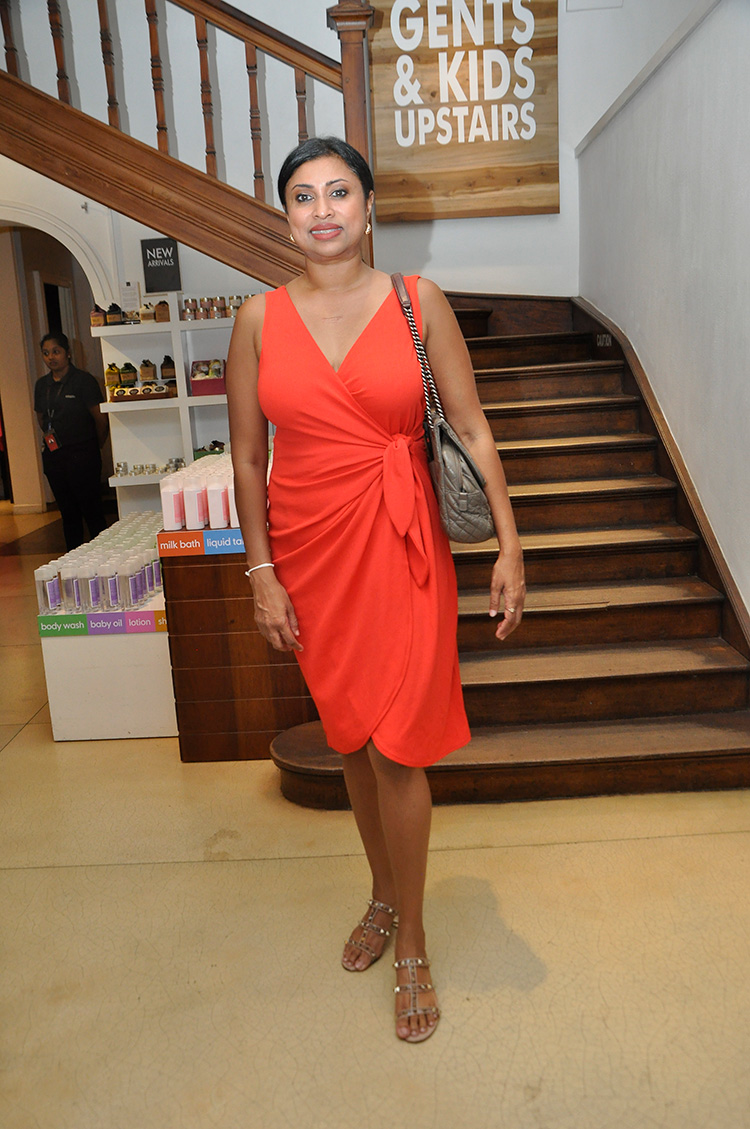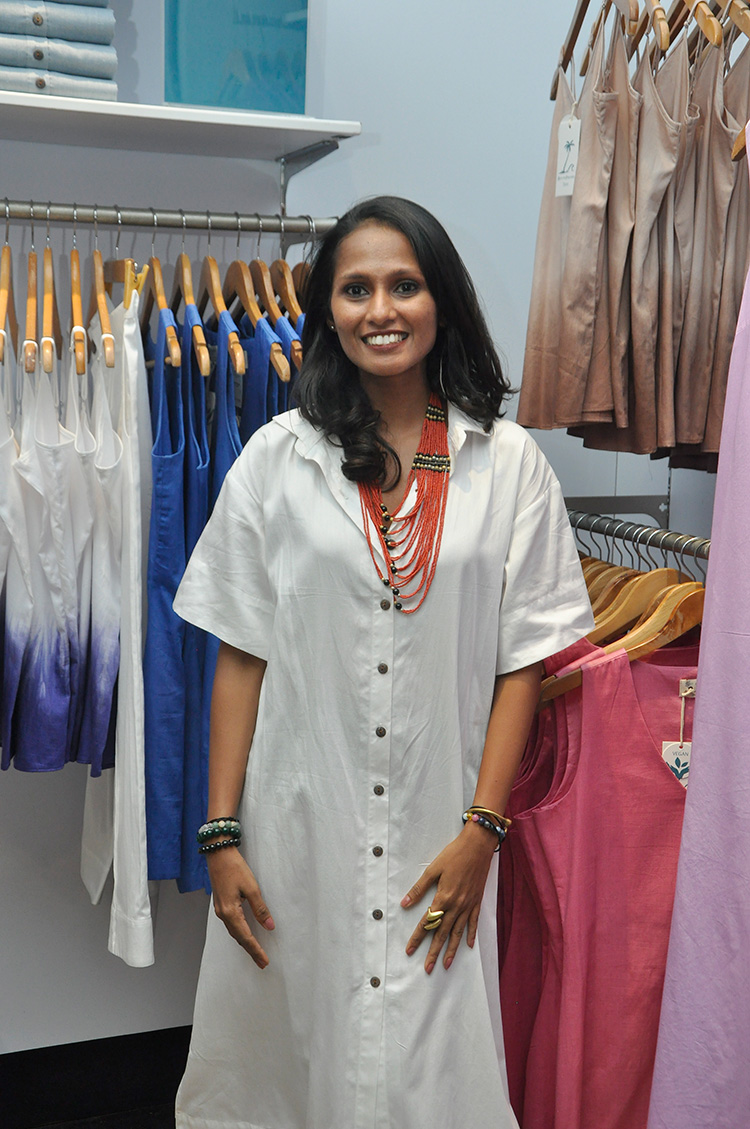Fashion
Screen Children ‘Nothing about us, without us’

By Bishop Duleep de Chickera
Schooling and education
Even though they overlap, there are some crucial differences between rigid schooling systems and education.
Rigid schooling prepares children for exams and qualifies them for employment. Education equips children with values and prepares them for life. Consequently, children schooled under a rigid system are likely to be content with routine. They accept the definition of situations by others. Those educated learn to look beyond.
Rigid schooling immerses the child in a world of information while education encourages the child to sift information for the truth. This is why rigid systems of schooling can easily manipulate children, and education cannot.
Rigid schooling is known to indoctrinate children. It tampers with history and repeats lies. Education, reminds children that unless they shape history, the forces behind indoctrination will eventually take over their world and their lives.
At their worst, rigid systems of schooling are created and exploited by tyrants to blunt and blur the obligations and responsibilities of citizenship. At its best, education awakens the child to a sense of belonging with all life, and the ensuing responsibility to strive after dignity and freedom for all life.
For very good reasons therefore, education cannot wait till rigid schooling saps the ingenuity and imagination of the child. It must take place alongside these systems, and one day replace them.
Ironically, the currently stifling pandemic opens the way to some possibilities in this daunting task.
Pandemic schooling
The novelty of screen lessons fooled the immediate school community, for a while. Children enjoyed tinkering with technology, and parents were relieved that lessons minus the daily hassle of unyielding traffic, were a tap away. Principals were relieved that children and teachers were working, and that teacher salaries were justified.
Then, there were signs of exhaustion. The invaluable ‘face to face’ social encounter replaced by long hours of screen lessons, was taking its toll. As children’s minds wrestled with strange happenings, adult habit kept the school going; if not on the campus, in the home.
Few schools discussed the sudden social impact of the pandemic with their children. Neither was there adequate preparation for screen lessons. Adults incorrectly assumed that children, unable to naturally sit still in class rooms, would sit attentively for hours at screen lessons.
Typically, no one bothered with a feed-back. From bureaucrats to principals and parents, few stopped to observe what was happening to the most important person in the school; the child. Confused over a tiny germ that shut the world down, and bewildered with the concept of screen lessons, children withdrew or turned to more attractive screen options than math and history.
Hovering parents on the other side of the screen, did not help teacher confidence. Some parents crossed the line to contradict and embarrass teachers. But there were some advantages. Class room control, the bane of the timid or less-prepared teacher, was eliminated, and an opportunity was gained to correct the fussy child’s take home complaints. Some teachers succeeded in reversing parental judgement, others suffered the forbidden fate of their students; they failed.
Principals were also tested. Caught between hard pressed children, teachers, and parents and inflexible directors and boards, they were expected to keep a tedious system alive on screens the size of the palm. Tension weighed heavily in the heart of the ‘Head’.
Before long, the other schooling obsession; examinations, raised its head. While very few principals had the courage and foresight to contest this entrenched practice in defence of their children in distress, most went along with the system. No matter the social anxieties spread by the pandemic, no matter the additional stress it would cause children, exams had to follow lessons.
But this was not all. Examinations, framed to measure memory and knowledge, would now ensure child complicity before the screen. As a means of soft intimidation, screen exams were expected to prevent children from ‘switching off’, and parents rather than teachers, would have to see to this. As always, in rigid systems of schooling, the child paid the most.
Wounded visionaries
The distress and estrangement that pandemic schooling has caused our children, must be the starting point, if we are to return to education. Consequently these realities demand attention.
Many children have become addicted to the screen, but not in pursuit of lessons. How are they to be helped?
All our children have lost the healthy ‘face to face’ peer encounters that are an intrinsic part of their growth; and in the case of adolescents two carefree and formative years of peer intimacy. How are they to be helped?
These heavy and uncertain days have robbed our children of their tendency and right to camaraderie, fun and play. How are they to be helped?
Screen lessons plus lock down plus agitated parents, have caused depression in some children. Pressed to do what children do not like to do, has suffocated the child. How are such children to be helped?
Children who have resisted screen lessons are not deviants. They could well be tomorrows’ thinkers. Informed and restless over the life threatening pandemic, they question the relevance of lessons that disregard the crisis. Such children may fail screen exams but they are a rare gift. How will these children be heard and helped?
One thing is certain in these challenges. To forget the diverse experiences of our children and treat them as if one size fits all, is the surest way of worsening the crisis.
Perhaps there is another certainty. If the mess in the procurement and distribution of vaccines is an indication of the impoverished quality and competence of our state administrators, we may not expect anything innovative from those at the helm of education. Even the few who look beyond, hold back for fear of disturbing the system.
What can be done to enhance our children’s education and growth, will therefore come from individual educationists, principals, teachers and parents with the courage to hear children and work together. That children themselves have a casual sense of wisdom that can enrich their own education is fast becoming a component in educational reforms. The slogan of differently-abled people, ‘Nothing about us without us’, is true of all excluded groups; very specially children.
Returning to school
a. An overview
Before children return to school a review of education must be done. You don’t wait for the next wave of the virus to order vaccines. This is the behaviour of the protected powerful.
The post pandemic world the child returns to will be different. It will be less free and more regulated. Unprecedented, unethical competition to undo economic loss will be at work, intensifying the plunder of Mother Earth’s generosity. Such unrestrained violence against our eco system, designed to feed the greed and extravagance of a few, is likely to provoke a Covid 20, to complete the havoc of its older sibling.
Consequently, post pandemic education will have to take note and introduce these widening trends into the curriculum, if our children are to learn to mitigate the dual genocide against the environment and humanity.
The natural care of the child for our eco-system plus her innate curiosity to question and probe, are invaluable resources in this task. Correspondingly, syllabi and class room dynamics will have to adjust to promote these gifts of the child towards her own education. Teaching skills and methods will have to fall in line and shift from lecturing to facilitation.
b. The immediate
The first month of schooling must avoid the routine school day plus piles of home-work. Instead, a Wednesday holiday with more intervals and a lesser number of half-hour periods, for the rest of the week, will ease cramped children and teachers into a fuller school day. A longer lunch break will also provide for social interaction and society activities.
The entire 2021 O/L batch should be passed, ideally without having to write the exam. These sixteen year olds have suffered unprecedented pandemic pressures and disruptions for nearly two years, and it would be cruel to expect them to work for public exams at a time when the most disciplined adult minds in the world are reeling. The prospect of failure, is the last anxiety that these adolescents should be put through.
Thereafter, six subjects for the OLs comprising, the child’s thinking language, a second language, mathematics, history-governance, science-environmental studies, and an aesthetic subject (singing, music, dance, debating/public speaking or drama) will be fair by the child and provide a balanced foundation for what must follow. Religion must be caught at home.
Assessments should comprise forty percent supervised assignments during schools hours for all grades. This will generate child interest and participation and reduce the agony of note transactions. Home work, at strictly one subject a day, should amount to material gathering (child research) for the next day’s assignments.
O/L results may be graded alphabetically. No child should be failed because no child is a failure. Any integrated adult; parent, teacher or observer, will testify to this universal truth.
How we deal AL courses and assessments and the near categorical impact it has on graduate studies, careers and socio-economic opportunities, especially for the financially modest, should be sensitively determined by insights gained in dealing with OLs.
Post-script
The current pandemic revives the call for parents, whether bankers or daily wage earners, farmers or clerks, to participate more deliberately in the education of their children. The integrated growth of the child is far too important to be left to institutions, mostly.
This parental role is best approached through warm and informal family conversations. Interesting stories, snippets of history and the sharing of real life incidents catch the interest and feed the appetite of the curious child. Examples of humble and courageous role models known to the child, an uncle, a grandmother or a neighbour, create lasting impressions and values in the mind of the child.
Hard questions by unpretentious children will keep parents on their toes and demand interpretation of happenings in the family, school, and on our streets. As families learn that conversations are best when they are not adult conversations only, the potential of the child to form an opinion and enrich interactions and parents as well as wider circles beyond, will grow.
There is no better way for children and parents to learn about being equal and different than the inclusion of the child in conversations. As this develops, children and parents learn to disagree without breaking community, sift propaganda from truth and sense the harm that hate speech causes. Like in ethics, the democratic spirit is sown and caught in the home. Labels, creeds and definitions come later, to fetter what must remain free to roam and become.
Whether or not our rigid system of schooling will change, this remarkable, time-tested aspect of home schooling is our most indispensable and secure option for today, if education is to create free and fulfilled children for a free and integrated Sri Lankan family.
Fashion
French model Ines in Sri Lankan spotlight

By Zanita careem
Modelling is sometimes an undiscovered and unknown way, it might be something that you have dreamed about and to your surprise you are destined to that route.This statement holds so true for Ines, a model from France, she is a model and she knows how to nail it. Ines believes in uniqueness and the moment the camera turns on she is there to give that unique and perfect shot. Her styling secret is to go elegant yet comfortable.Ines loves to work hard to be the perfect one out there and this could be something that could really motivate and inspire other people.
Q: Tell us a little about you and what was life growing up?
A: I’m Ines, born and raised in Paris with a family rich in values, primarily emphasizing independence and an entrepreneurial spirit.
I’ve had a passion for traveling ever since my mother took my brother and me on a year-long world tour when I was 12. Since then, I’ve pursued my studies in hospitality management online, and my journey led me to Sri Lanka, where I’ve been living for five years now.
Meeting people has helped me practice languages, and after traveling to more than 20 countries, I speak 4 languages including Sinhala. I live in the southern part of Sri Lanka where nature, tranquility, and the sound of the ocean reign.
Q: How were you discovered and how has your journey being so far?
A: As a hospitality student during the COVID lockdown, I was approached by clothing brands to work as a model. Prior to moving to Sri Lanka, I had done photo shoots for friends’ brands and especially for my mother’s jewellery line, but I never imagined having a professional career in this field.
I embrace challenges and seize new opportunities, hence I embarked on a career in modelling, which grew to such an extent that I established my own company as a freelance model. Additionally, as a dancer and artistic director, I also work on creative concepts that go beyond the typical photo shoots in Sri Lanka.
Q: Have you always had a passion for fashion and modelling?
A: I discovered this passion when I began posing in front of a camera. As a child, I always enjoyed shopping and dressing up, but I never imagined it would become my profession, especially since I struggled with my weight when I was younger. I believe that nothing in life happens by chance, and if I have fallen in love with Sri Lanka, it is for a reason. This country is full of opportunities; one simply needs to work hard and stand out from the rest.
Q: Biggest hurdle what are some obstacles you faced?
A: I do not encounter specific obstacles in my professional career, but my weakness lies in my sociability. I need to continue working and managing my energy and preserving it for projects that truly bring me happiness. Given the high level of tourism in the southern part of the country, interactions are plenty but can be challenging.
Q: Some latest and up coming projects?
A: The latest project I am currently working on is establishing a career in content creation. I aspire to express and unleash my creativity while collaborating with brands and hotels that hold significance to me. A future project that I have dreamt of for a long time is launching my own clothing brand… but everything takes its own time…
Q: Top tips that keep you looking youthful?
A: Appearing young is of no importance to me; what truly matters is feeling comfortable in one’s own skin and being happy. Youthfulness is largely defined by attitude and energy. What brings me happiness is my family, projects, travels, dancing, and surfing.
Q: What are some of the pros of being a model?
A: The benefits of being a model include constantly being on the move and sometimes even travelling. Additionally, I am deeply grateful for the attention and care that teams provide; it makes me feel like a princess. Representing a brand or company also fosters self-confidence and gratitude.
8. Q: If you could change anything about the fashion industry, what would it be?
A: If I were to change something in the fashion industry in Sri Lanka, it would be to encourage brands to be more creative and accept models of diverse body shapes. Moreover, it’s crucial for them to recognize the beauty of the majority of the population’s natural, dusky skin tones. It’s time to dispel stereotypes associated with fair skin. Sri Lankan dusky skin is beautiful, and it’s imperative to stop labelling it as inferior to fair skin.
Q: What is your mantra?
A: My life philosphy is one of positivity towards everything I do and everything that happens to me. There is always a lesson to be learned
Q: Some of your favourite designers?
A: My favourite designer is Kami Hewavitharane and a brand labelled the Colombo Batik brand.. This brand produces unique and colorful designs and thier collections are breathtakingly beautiful.
Q: If you weren’t a model what would you be?
A: In addition to my career as a model, I work as a manager in hospitality and restaurant management. It’s one of my passions. Otherwise, I would have liked to pursue a career as a professional dancer, but it requires years of practice.
Q: So, has your perception of the fashion industry changed over time?
A: My perception of the industry has not changed much, but I feel now the industry has moved forward for the better. There is originality and creativity amongst most of the designers, and I see an increasing number of women venturing into it, which pleases me.
Q: What was the most important moment in your life?
A: What a difficult question haha! So many beautiful moments, and even the tough ones, have contributed significantly to my growth and evolution. However, the most crucial moment was staying in Sri Lanka despite the COVID conditions and France’s requirement for expatriates to return. I stayed back and took up challenges to pursue my own brand.
Q: What do you think about the state of fashion today?
A: I believe that the state of the fashion industry in Sri Lanka is undergoing significant evolution, with Sri Lankans becoming increasingly independent, liberated, and enterprising.
Fashion
Black dress-versatatile and timeless

 The little black dress plays such a starring role in our wardrobes that it has its own special designation: the LBD. Vogue’s Hamish Bowles takes us through its history, decade by decade, from Coco Chanel to Cushnie on black dress.
The little black dress plays such a starring role in our wardrobes that it has its own special designation: the LBD. Vogue’s Hamish Bowles takes us through its history, decade by decade, from Coco Chanel to Cushnie on black dress.
It’s Mademoiselle Chanel who is credited with popularizing the look and, in doing so, making the colour black, previously worn only when in mourning or to express piety (as in ecclesiastical garb), fashionable. In 1926 Vogue dubbed a drawing of one of her snappy, drop-waisted LBDs, “The Chanel ‘Ford’—the frock that all the world will wear.”
They did, and do—men have recently gotten in on the game—though not all carry the Chanel label. In the 1950s, Christian Dior defined the look of the LBD: full-skirted and wasp-waisted. The little black dress Hubert de Givenchy designed for Audrey Hepburn in the movie Breakfast at Tiffany’s is as representative of the early 1960s as Yves Saint Laurent’s sheer, feather-trimmed number of the latter part of that iconoclastic decade.
Cocktail dresses and LBDs, which are defined by their short(ish) length, are often one and the same. One of the reasons neither will ever go out of style is that there are myriad ways to play “mixologist” with the spare, neat LBD to give it just the kick you want. Cheers!
The little black dress plays such a starring role in our wardrobes that it has its own special designation: the LBD.
In 1926 Vogue dubbed a drawing of one of her snappy, drop-waisted LBDs, “The Chanel ‘Ford’—the frock that all the world will wear.”
From the moment Coco Chanel presented it to the world in the 1920s, the eternal dress became a canvas that almost every designer wanted to weave something of their own into. Although it has moved away from its basic principles, the little black dress has retained the same charm and the same note of seductiveness it once had, and new variations, as with every season so far, also graced the runways in the fall/winter 2024 collections.
Ultra-short models shone on the runways from Tom Ford, Schiaparelli, Givenchy, Giambattista Valli to Ferragamo, as well as many others, proving once again that the little black dress is a garment that will function in every collection and that will, ultimately, also surely be worn. Although the models of these fashion names differ and each has brought their own vision to the iconic dress, what they have in common is that they all serve as a good reminder that the charm of the little black dress does not fade and that we will always return to it, precisely because it is so timeless and versatile.
From the moment Coco Chanel presented it to the world in the 1920s, the eternal dress became a canvas that almost every designer wanted to weave something of their own into. Although it has moved away from its basic principles, the little black dress has retained the same charm and the same note of seductiveness it once had, and new variations, as with every season so far, also graced the runways in the fall/winter 2024 collections.
Ultra-short models shone on the runways from Tom Ford, Schiaparelli, Givenchy, Giambattista Valli to Ferragamo, as well as many others, proving once again that the little black dress is a garment that will function in every collection and that will, ultimately, also surely be worn.
Although the models of these fashion names differ and each has brought their own vision to the iconic dress, what they have in common is that they all serve as a good reminder that the charm of the little black dress does not fade and that we will always return to it, precisely because it is so timeless and versatile.
Fashion
Groundbreaking new collection from Vegan fabric

At a very young age Thushani Rodrigo discovered her love for fashion. An entrepreneur and a fashion designer, she loves to create clothes and garments for people to wear with pride.
 Sri Lanka’s fashion landscape is about to experience a transformative shift as Thushani Rodrigo, the visionary founder of Todos, introduces Bliss in Paradise her latest collection with the inspiring ethos, “Wrap Yourself in Kindness.” Under the theme “Fashioning Tomorrow,” Thushani’s collection invites individuals to embrace Vegan Silk as a symbol of kindness towards animals and the environment.
Sri Lanka’s fashion landscape is about to experience a transformative shift as Thushani Rodrigo, the visionary founder of Todos, introduces Bliss in Paradise her latest collection with the inspiring ethos, “Wrap Yourself in Kindness.” Under the theme “Fashioning Tomorrow,” Thushani’s collection invites individuals to embrace Vegan Silk as a symbol of kindness towards animals and the environment.
The ethos “Wrap Yourself in Kindness” embodies the essence of Thushani’s collection, emphasizing the importance of compassion and sustainability in fashion. Through the use of Vegan Silk, derived from eco-friendly plant sources, Thushani encourages individuals to adopt a lifestyle of kindness towards animals and the planet.
Despite facing a hearing impairment, Thushani Rodrigo’s passion and determination have propelled her to remarkable heights in the world of fashion. At the age of 16, she earned her Diploma in-Dress Making from Singer School, laying the foundation for her entrepreneurial journey.
Today, Thushani stands as a beacon of innovation and sustainability in the fashion landscape. Her latest venture, which will be retailed at Cotton Collection underscores he- unwavering commitment to ethical fashion practices and environmental responsibility.
Vegan silk, also known as “plant-based silk” or “cruelty-free silk,” serves as the cornerstone of Thushani’s groundbreaking collection. Derived from sustainable plant sources, Vegan Fabric offers a sustainable and animal-friendly alternative to traditional silk.
Thushani’s designs, meticulously crafted from Vegan Fabric, embrace the female form while seamlessly blending sensuousness with practicality.
The launch of Thushani Rodrigo’s Vegan Fabric Collection with Cotton Collection heralds a new era of sustainable fashion in Sri Lanka. By embracing cruelty-free materials and ethical production practices, Thushani paves the way for a more conscious and compassionate fashion industry.
Join us in celebrating this monumental milestone in sustainable fashion as Thushani Rodrigo and Cotton Collection redefine the future of style with their innovative Vegan Fabric Collection.
For media inquiries, please contact: Ruwanthi Rodrigo 0777660477
- Talented Tushani Rodrigo
Pix by Thushara Attapathu

























